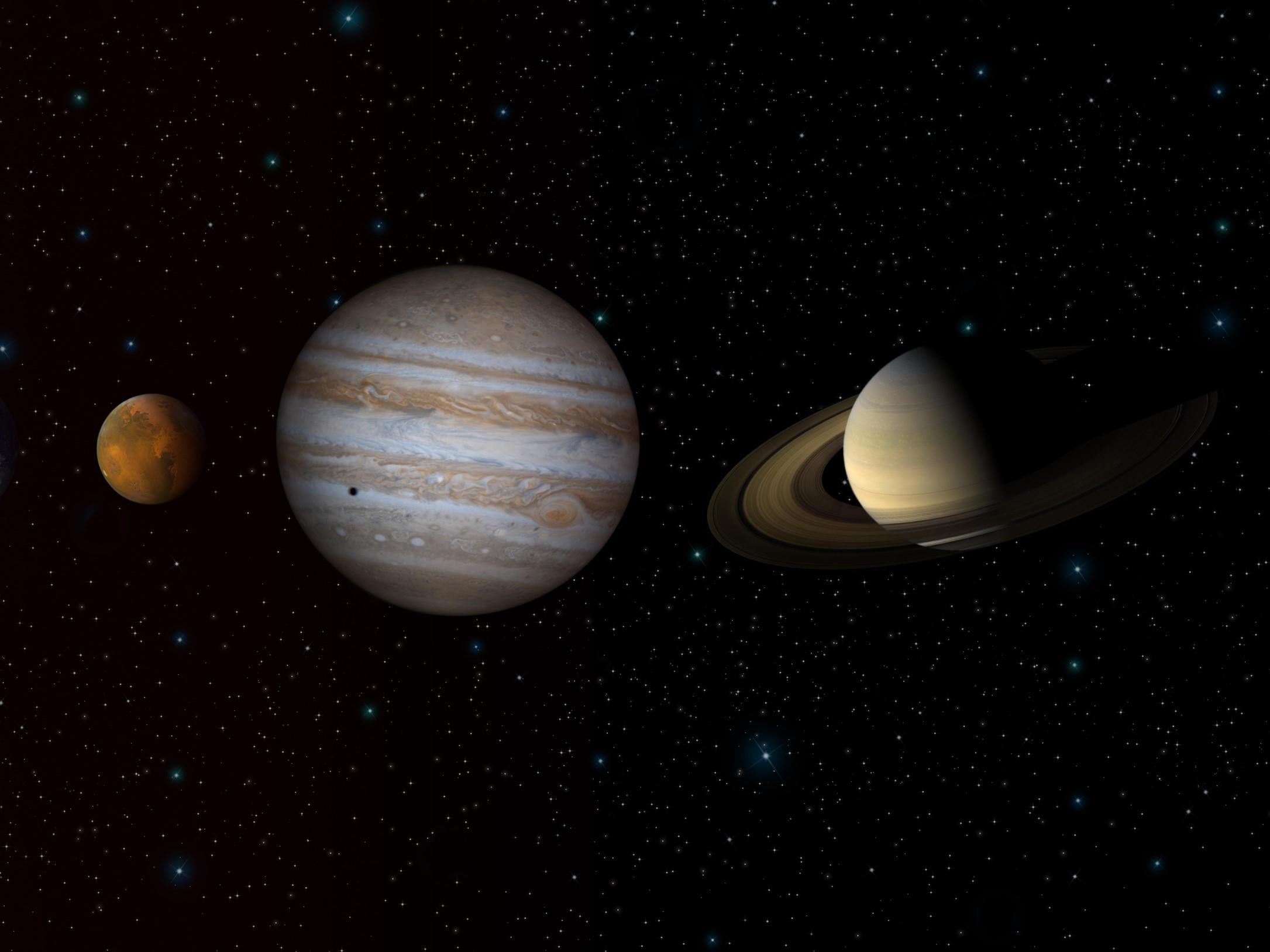Planet rise: How to see Mars, Saturn and Jupiter in the night sky this week
All three planets will also appear bigger and brighter as they reach 'opposition'

Mars, Jupiter and Saturn will all be visible at the same time in the night’s sky this week, with all three planets rising above the horizon within three hours of each other.
The planets will also appear bigger and brighter than usual, as they are all approaching “opposition” – the point when they are at their closest point to Earth in their orbits.
On Tuesday, Jupiter will rise at 11.30pm, Saturn will rise at 11:44pm and Mars will rise at 1.41am on Wednesday morning. Throughout the week and through the rest of the month, these times will get gradually earlier.
Venus will also begin to be visible again, having been hidden from sight in early June by the sun's glare during sunrise and sunset.
Venus is usually the brightest planet and is usually the first thing that is visible in the night sky after the moon, appearing like a bright star to the naked eye.
Various apps are available to track the planets across the night sky, including Star Chart, Sky Safari and Skyview.
Each app gives details about where the planets will rise and set on the horizon and in which direction they will travel on any particular night.
No matter where you are in the world, Jupiter will always rise first, followed by Saturn and then Mars.
“Mars, which is a bit brighter than Saturn, more or less aligns with Jupiter and Saturn in the predawn/ dawn sky,” wrote Bruce McClure and Deborah Byrd in EarthSky.
“However, standoffish Mars is a long jump to the east of Jupiter and Saturn. Saturn shines between Jupiter and Mars, though much closer to Jupiter. Watch for the moon in the vicinity of Jupiter and Saturn for several days.”
Earth’s smaller, faster orbit of the Sun means it will actually begin to catch up with Mars over the coming months, making the Red Planet appear bigger and brighter in the sky.
Earth will pass between Mars and the sun on 13 October, when the two planets will begin to move further apart again.
Around that time, Mars will supplant Jupiter and appear as the fourth-brightest celestial body after the sun, moon and Venus.
Join our commenting forum
Join thought-provoking conversations, follow other Independent readers and see their replies
Comments
Bookmark popover
Removed from bookmarks